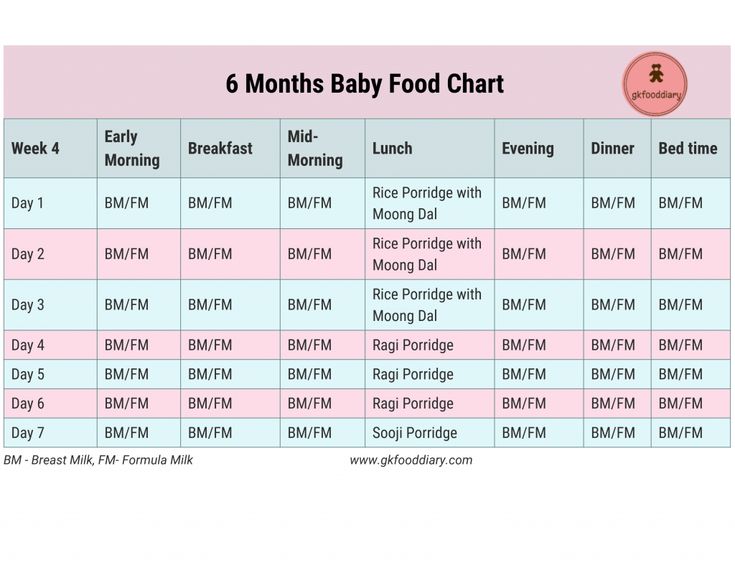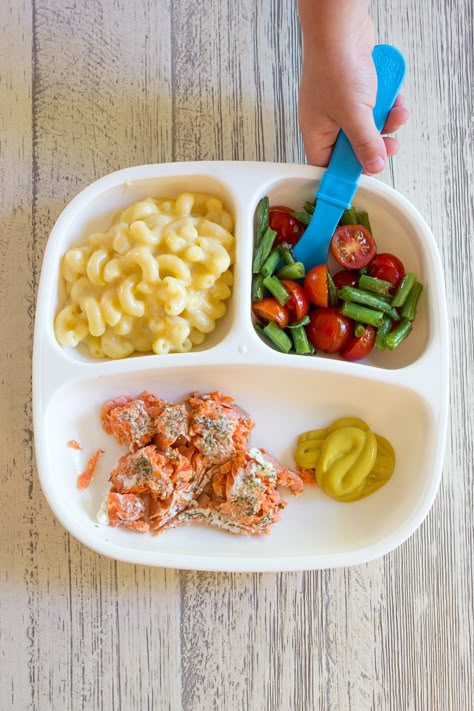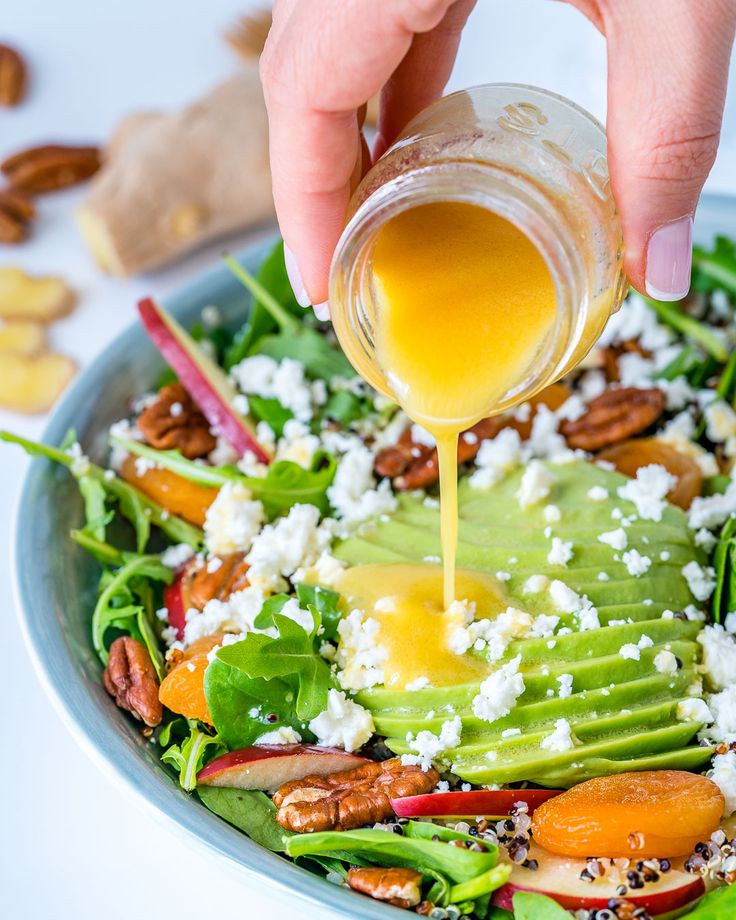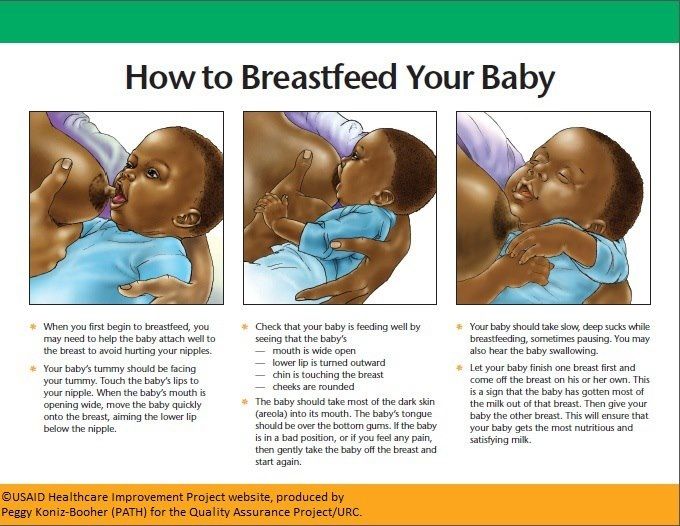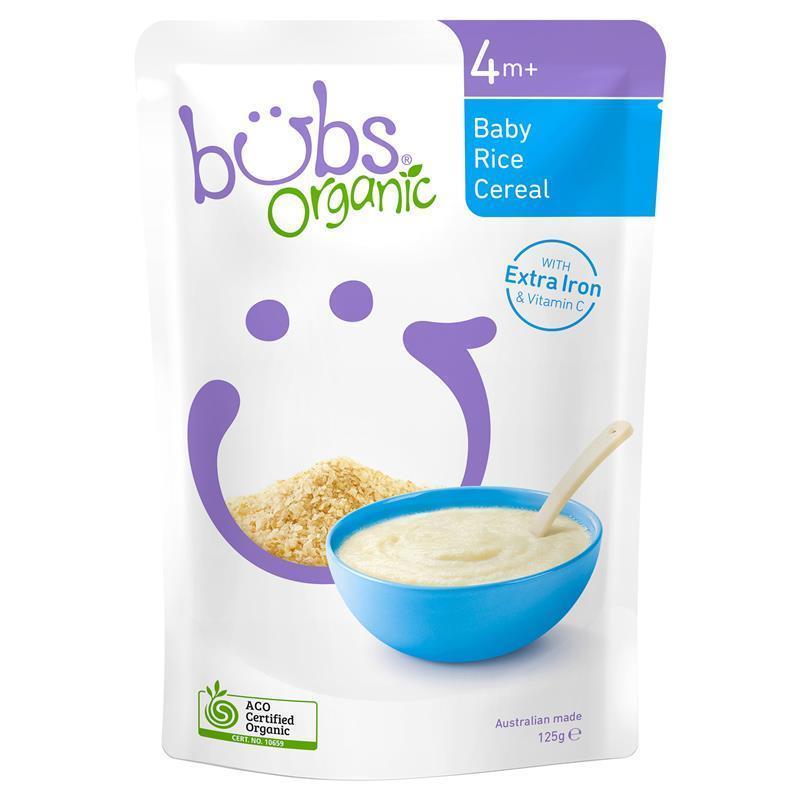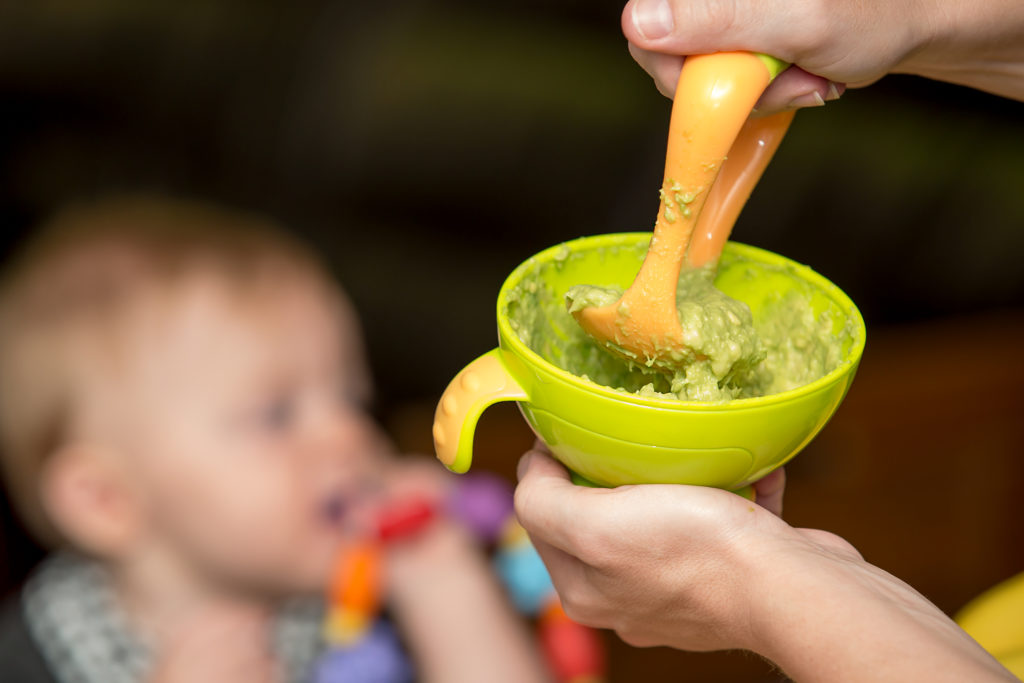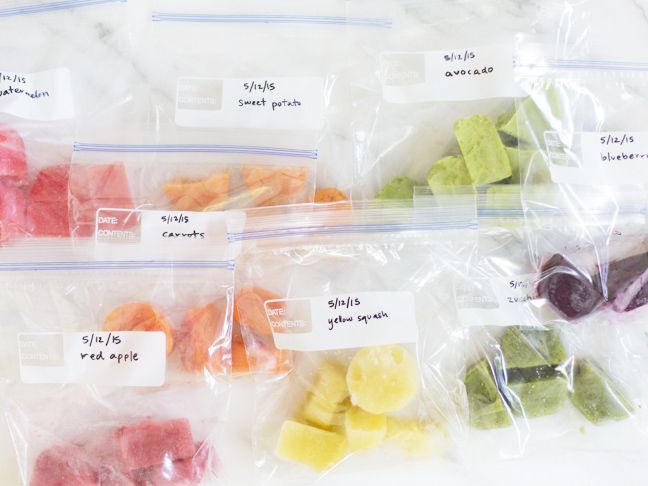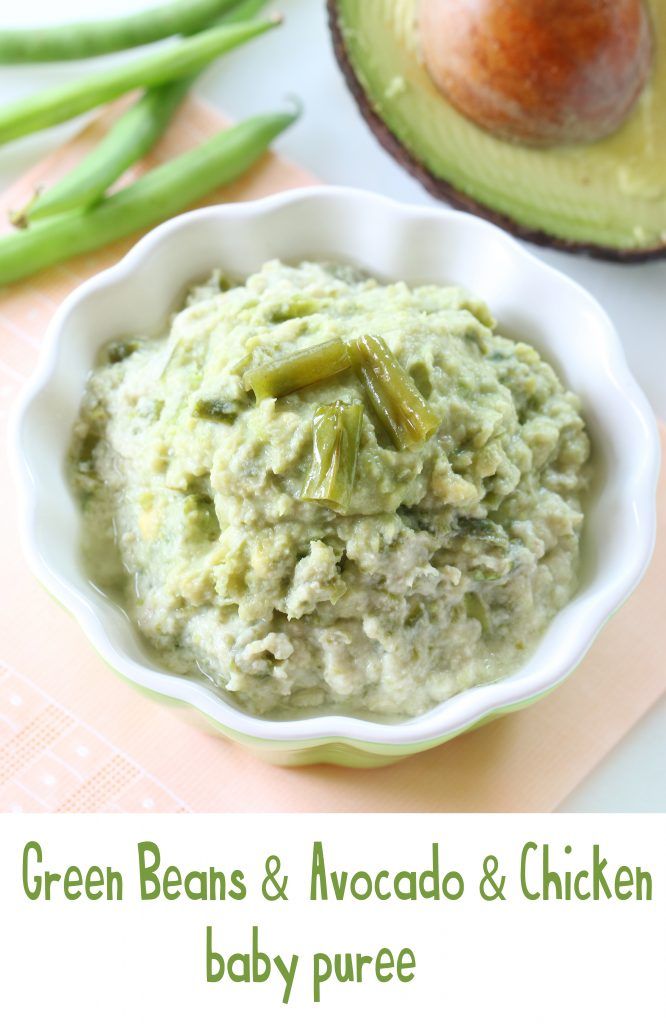Feeding schedule for 6 month old breastfed baby starting solids
Sample Schedules for Starting Solids (6 to 12 Months)
Looking for sample schedules for starting solids? Ideas for how to introduce solids on a schedule. Including sample feeding schedule for 6 months old and beyond.
Ready to start solids with your babe? This is an exciting time!
Here’s everything you need to know about introducing solids safely including sample schedules for starting solids from 6 months to 12 months, plus recommended menu items.
Is Baby Ready for Solids?
The most important thing to consider as your baby approaches the 4-6 month mark, is whether they are showing signs of feeding readiness.
This includes things like:
- Baby is 6 months old (there is no benefit to starting solids before 4 months at the earliest)
- They are interested in food they see around them
- Baby is losing their tongue thrust reflex that keeps food out of their mouth
- They are sitting up on their own for at least 60 seconds at a time
If your baby is showing these signs, great! It’s time to start introducing some solids.
Note that baby should continue receiving breast milk and/or formula for at least the first year of life, as you begin the transition to solid foods.
What Are the Benefits of Solids?
Eventually, your baby’s diet will be predominantly solid foods, but it takes some time to get there.
Solid foods expose your baby to a wide variety of textures, shapes, consistencies, and colors. They’re also important for nutrition, providing an array of vitamins, minerals, fiber, protein, fat, and energy.
Eating solids is also important for physical growth and development. As your baby matures, they become prepared to try new foods and get more of their nutrients from solids than breast milk/formula.
Plus, it’s fun to play with and try new foods!
However you decide to introduce solids – using a traditional spoon-feeding/puree approach or a baby-led weaning approach – your baby benefits from the nutrition and exposure.
Recommended Solid Foods for Babies
Below are some nutritious first foods that have worked well for us:
- Tofu
- Avocado
- Oatmeal
- Hummus
- Pancakes
- Soft fruits, like bananas, kiwi, mango
- Soft-cooked vegetables, like zucchini, sweet potato, and broccoli
- Beans, peas, lentils
- Toast, cut into strips
As you design your baby’s menu, these are some great nutrient-dense foods to incorporate that can also be prepared and served in an age-appropriate way.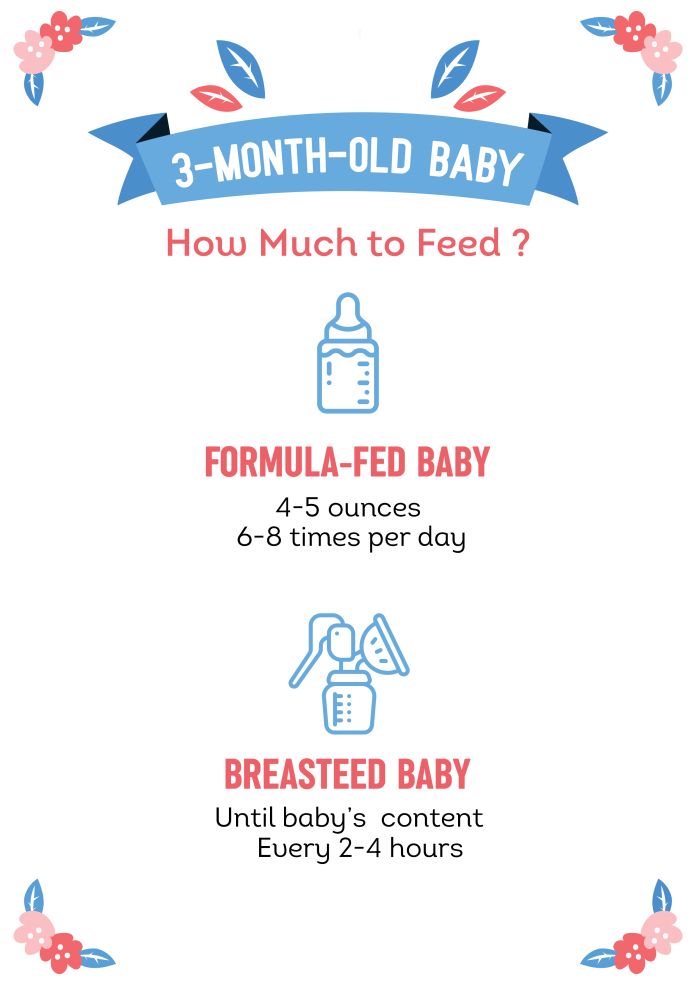
For a list of foods to avoid when starting solids, see this blog post.
Sample Schedules for Starting Solids
How you choose to design your baby’s solid feeding schedule depends on several things, including what your daily routine looks like.
We recommend beginning with 1 solid food meal per day for 6-month-old babes and increasing to 3 meals per day for 9-month-old babies.
Between these milestones, continue to slowly add new foods and increase how many meals/snacks you’re offering.
By 12 months old, your baby will be eating 3 meals and a few snacks per day of solid foods, using breast milk and/or milk/milk alternatives (e.g., fortified unsweetened soy or pea milk) as needed.
Keep in mind that it can take 10-15 times of offering a food before a baby even tries it, or decides whether they like it. If your baby doesn’t seem to be interested in a certain food, keep offering.
Below are a few example feeding schedules for offering solids to babes at least 6 months old.
Feeding Schedule for 6 Months
- 7am: Breastfeed/bottle feed
- 8am: Breakfast – Iron-fortified baby oat cereal, peeled sliced peaches, avocado strips
- 11am: Breastfeed/bottle feed
- 2pm: Breastfeed/bottle feed
- 5pm: Breastfeed/bottle feed
- 7pm: Breastfeed/bottle feed
Note that you may continue to breastfeed/bottle feed babies this age during the night if they are still waking up.
Feeding Schedule for 9 Months
- 7am: Breastfeed/bottle feed
- 8am: Breakfast – Pancake strips, chopped raspberries and bananes
- 11am: Breastfeed/bottle feed
- 12pm: Lunch – Penne pasta with tomato sauce, green peas, melon slices with skin and seed removed
- 3pm: Breastfeed/bottle feed
- 5pm: Breastfeed/bottle feed
- 6pm: Dinner – Smashed black beans, tofu strips drizzled with thinned nut butter, sliced orange sections with outer membranes and pith removed
- 7pm: Breastfeed/bottle feed
Feeding Schedule for 12 Months
- 7am: Breast milk or milk/milk alternative
- 8am: Breakfast – Toast strips with mashed avocado, half of a banana (remove 2 inches of the skin, leaving the rest of the peel for easy handling)
- 10am: Mid-morning snack – chopped watermelon, diced grapes, hummus
- 12pm: Lunch – Quinoa-based veggie burger patty, steamed cauliflower and beet strips
- 3pm: Afternoon snack + breast milk or milk/milk alternative
- 6pm: Dinner – Lightly fried tempeh strips, kidney beans, roasted sweet potato cubes, steamed cucumber
- 7pm: Breast milk or milk/milk alternative
We hope these sample schedules for starting solids are helpful when your baby is ready for first foods. When you introduce solids on a schedule, this can help alleviate some of the stress of feeding while nourishing your baby well. Have fun with it!
When you introduce solids on a schedule, this can help alleviate some of the stress of feeding while nourishing your baby well. Have fun with it!
Chime In: If you’ve already done solids with your babe, what has your schedule looked like? Any other tips for new parents?
If you found this post helpful, we suggest you read these too:
- Spoon Feeding vs. Baby-Led Weaning
- Do Babies Really Need 11mg of Iron a Day?
- Plant-Based Baby-Led Weaning Grocery List
- How to Wean Baby to Plant-Based Milk
6-month-old feeding schedule: Timetable
A baby’s 6-month birthday marks an important transition as many infants are ready to start trying solids at this point.
While breast milk or formula should still form the core of a 6-month-old’s diet, some caregivers find that a child’s feeding schedule shifts as they begin eating purees and other solids.
Share on PinterestWhen a baby reaches 6 months of age, purees and other solid foods can usually become part of their diet.
Babies typically need to eat every 2–3 hours, five to six times during the day.
It is normal for a baby’s schedule to change from day to day, or for babies to eat different amounts of food each day.
Caregivers can follow a baby’s cues, even if they have established a schedule already. A parent or caregiver does not need to deny food to a baby just because it has already eaten.
Introducing solids
The American Academy of Pediatrics (AAP) advise that parents exclusively breastfeed infants for about 6 months if possible. By the time a baby hits their half birthday, they may be ready to try solids.
A baby may be ready for solids at 6 months if:
- they have good head control
- they can hold their head up for extended periods
- they can sit up with no or very little assistance
- they no longer have the tongue thrust reflect to push food out of the mouth with the tongue
- they show interest at mealtime and lean toward food if a caregiver offers it
At this age, breast milk or formula is still a baby’s most important form of nutrition and solids are an addition.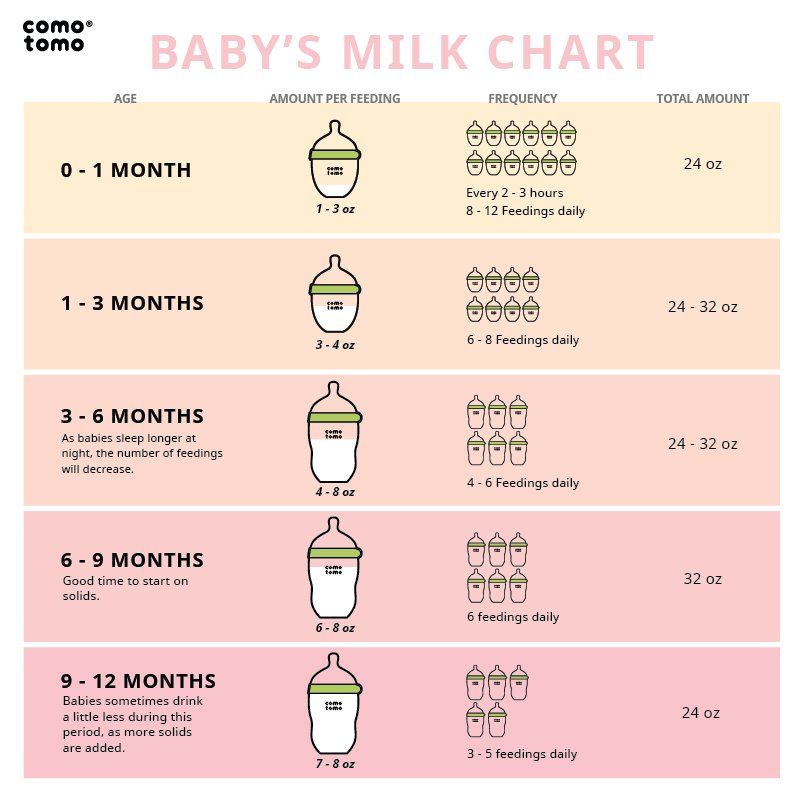
Not all 6-month-olds are ready for solids. If a baby shows no interest, a caregiver can wait a few weeks and try again.
Giving a baby 1–2 tablespoons of iron fortified cereal or fruit or vegetable purees per feeding can be a good place to start.
Gradually increasing this as the baby’s interest and appetite increase can follow.
To ensure a baby eats sufficient food, the adult can breastfeed or give a bottle before offering solids.
Caregivers can give solid food as a supplement each time they nurse the baby or give a bottle. Or, they can include the baby in family meals by giving solids at mealtime.
At 6 months of age, when an infant may begin to want solids, a caregiver can offer these just once per day.
Choosing a time of day when the caregiver is relaxed and not pressed for time, and the baby is not overly hungry, fussy, or tired often works best.
Once a baby is enjoying their once-a-day solids, the frequency can increase to two and then three times a day.
There is no “right” schedule, but caregivers should plan to increase the number of solids babies get gradually.
At 6 months, the goal is not to introduce new foods and eating habits. Similarly, there is no need to force a baby to eat solids or restrict new food if a baby indicates they want more.
Regardless of their size and eating habits, babies need access to an expanding variety of solid foods.
Most babies will need to try new foods several times before they feel comfortable eating them. It is fine to let a child eat at their own pace, in the way that feels right to them.
It is acceptable at this age for a baby to play with their food since this is a way of exploring new things.
Breast milk and formula
Breast milk or formula remains the most important food at 6 months of age. The easiest way to ensure a baby eats enough is to nurse or formula feed them on demand when they show signs of hunger.
Research supports the value of feeding on demand.
A longitudinal study of 10,419 children found better academic achievement and a four-point Intelligent Quotient (IQ) advantage at 8 years old among children whose caregivers fed them on demand.
However, the caregivers of these children got less sleep and had lower overall well-being.
These results may point to adults finding a happy medium, such as steadily shaping the baby’s preferred schedule into one that works for them.
In general, caregivers should plan to breastfeed babies 3 to 5 times per day, and sometimes more. However, babies vary greatly and every 3–4 hours is common, which can amount to up to eight times in 24 hours.
Some babies prefer cluster feedings, during which they nurse several times in a short period. Growing or sick babies may also nurse more frequently.
If a baby has formula, giving 24–32 ounces of iron fortified formula spread over five or six feeds per day is typical. While some babies sleep through the night at 6 months, others will still wake or want to feed.
A nighttime “dream feed” around the time caregivers retire for the evening may help babies sleep longer.
Other liquids
Babies do not need juice at 6 months. The extra calories can decrease a baby’s appetite, and the sugar may damage a child’s developing teeth. Soda and other drinks are not healthful for babies.
Babies can have water beginning at 6 months, or when caregivers introduce solids, whichever is later. Introducing a cup of water along with solid meals may be helpful.
Around 6 months old, some babies begin transitioning from three or four daily naps to two. The baby might take a midmorning nap and a midafternoon nap. At this age, most babies need 12–15 hours of sleep per day, and naps usually last 1–3 hours.
Caregivers are best finding a schedule that works for them and the child. Some children are used to falling asleep by nursing or with a bottle. Others happily doze off on their own.
A caregiver can follow the baby’s cues and work to adapt their needs to the family’s schedule slowly.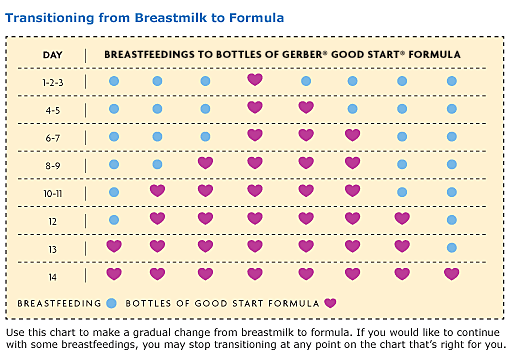
These feeding tips may help:
- Babies may be hungrier after waking from a long nap. This can be a good time to try solids after offering formula or breast milk to ease their initial hunger.
- There is no evidence that adding cereal to a bottle helps babies sleep longer. Doing so can increase their risk of choking.
- Babies must never have food without close supervision. nor have solids, even very thin purees, in bed.
Deciding what, when, and how to feed a baby can be challenging, especially during the transition to solids. As long as babies get regular breast milk or formula, caregivers do not need to rush the transition to solids or worry that babies are not eating enough.
Some babies take longer than others to embrace solids, while some will eagerly eat anything. The right schedule is one that works for the baby and family. This schedule may change over time which is also fine.
How to introduce complementary foods while breastfeeding: Monthly chart
Reviewer Kovtun Tatiana Anatolievna
19938 views
November 24, 2021
Login or register to save articles and products to your favorites
Before every parent one day the question arises - how to introduce complementary foods for months and do it right?
When to start complementary foods
The question of the timing of the introduction of complementary foods is still debatable.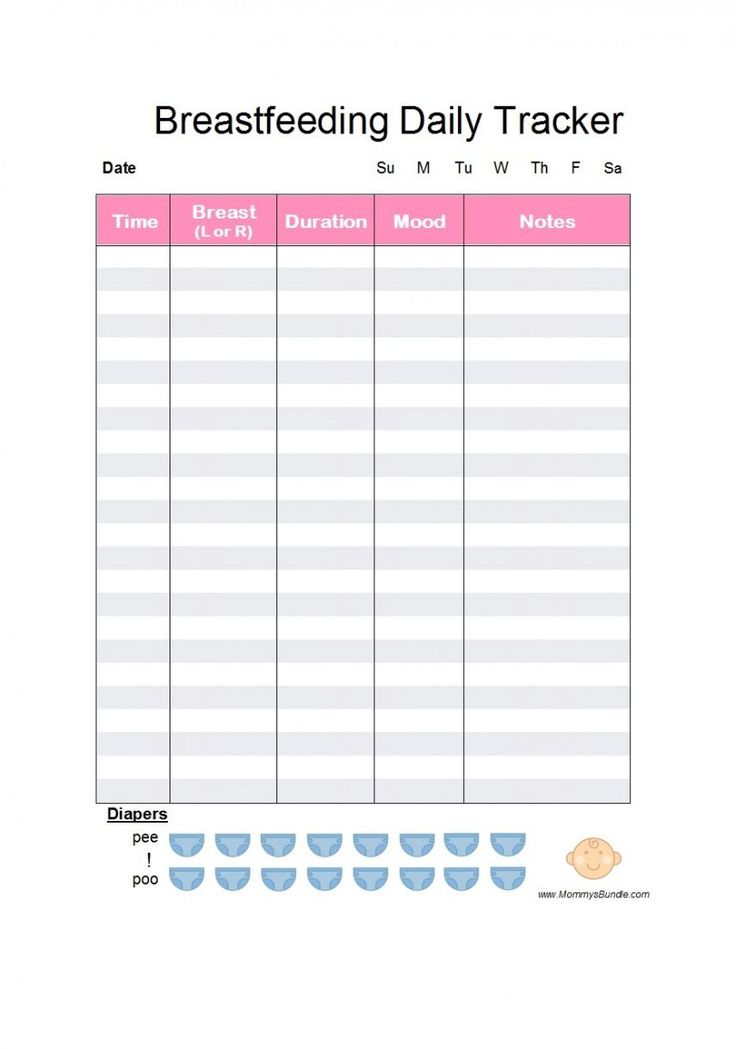 Over the past decades, doctors have agreed that the introduction of complementary foods with any type of feeding should be started at 4-6 months. However, the principle of an individual approach to each child remains unshakable in the organization of complementary foods. There are quite a few factors that affect the age of the first complementary foods. Therefore, before giving your baby new products, you should consult a pediatrician [1, 2] .
Over the past decades, doctors have agreed that the introduction of complementary foods with any type of feeding should be started at 4-6 months. However, the principle of an individual approach to each child remains unshakable in the organization of complementary foods. There are quite a few factors that affect the age of the first complementary foods. Therefore, before giving your baby new products, you should consult a pediatrician [1, 2] .
The order of introduction of products is also determined individually. So, for example, porridge is recommended to be administered first with a lack of body weight. If the baby's weight is normal or in excess, it is better to start with vegetable puree. However, these recommendations should be based only on the opinion of the pediatrician.
Which products should be preferred: ready-made or homemade
Experts answer this question as follows: let's say any option, depending on the individual conditions, developmental characteristics and health status of the baby, the capabilities and desires of the family. However, the decision must also be made after consultation with your pediatrician. Industrial products have a number of advantages. Firstly, for their preparation only safe raw materials are used, which pass all the necessary checks and quality control. In addition, for the manufacture of baby food, technologies are used that meet all hygienic standards. Secondly, when developing their composition, the required level of grinding is taken into account. Thirdly, specialists who are responsible for safety are involved in the manufacture of complementary foods.
However, the decision must also be made after consultation with your pediatrician. Industrial products have a number of advantages. Firstly, for their preparation only safe raw materials are used, which pass all the necessary checks and quality control. In addition, for the manufacture of baby food, technologies are used that meet all hygienic standards. Secondly, when developing their composition, the required level of grinding is taken into account. Thirdly, specialists who are responsible for safety are involved in the manufacture of complementary foods.
Where to start complementary foods
Dairy-free cereals
For the first acquaintance with grain products, rice or buckwheat baby porridge is suitable. It is better to give preference to cereals of industrial production. Despite the great desire of parents to cook porridge on their own, it must be understood that during cooking, cereals can lose a number of important nutrients. Instant cereals, that is, soluble, are distinguished by the fact that during their production the substances necessary for a small organism are preserved. In addition, the required degree of grinding is taken into account and observed at the baby food production plant.
In addition, the required degree of grinding is taken into account and observed at the baby food production plant.
Vegetables
It is better to start complementary foods with one-component puree of broccoli, cauliflower or courgettes [1] . All these products should be introduced in turn, observing the reaction. If the baby has taken well one type of vegetable, you can offer another, gradually expanding the diet. Experts recommend starting a child's training in vegetables with industrial baby purees. This approach guarantees the safety of the first complementary foods, because their production undergoes a multi-stage test. The FrutoNyanya baby puree contains only natural vegetables, without the addition of starch, salt or preservatives.
Breastfeeding complementary feeding chart by month
These recommendations are generalized and do not take into account the individual characteristics of each child, so the exact scheme and timing of the introduction of complementary foods should be checked with your pediatrician.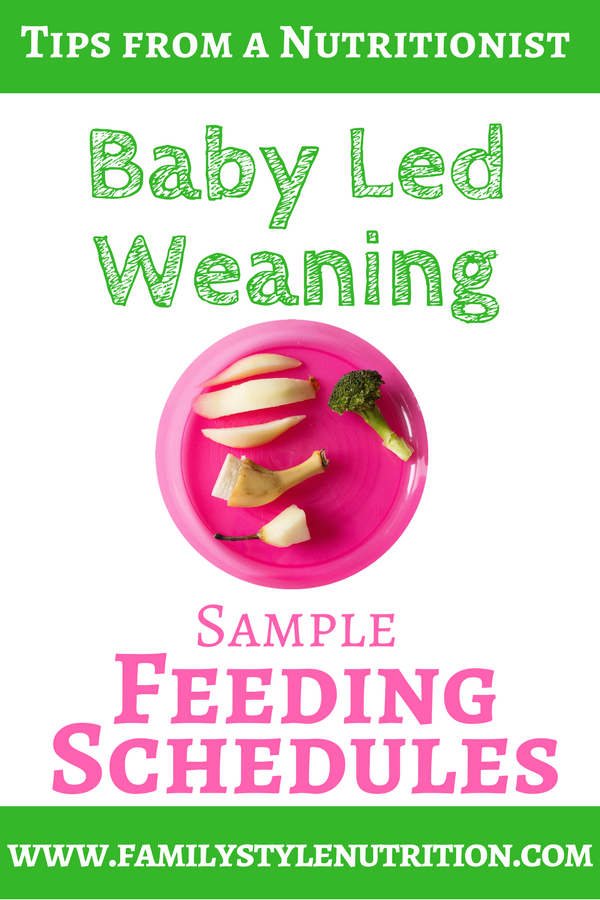
| Product names (g, ml) | 4–5 months | 6 months | 7 months | 8 months | 9-12 months |
| vegetable puree | 10 - 150 | 150 | 150 | 150 | 150 |
| Porridge | 10 - 150 | 150 | 150 | 180 | 200 |
| Meat puree of industrial production*/boiled meat | - | 5–30/ 3–15 | 40–50/ 20–30 | 60–70/ 30–35 | 80–100/ 40–50 |
| Fruit puree** | 5 - 50 | 60 | 70 | 80 | 90-100 |
| Cottage cheese (not earlier than 5.5 months)*** | - | - | - | 10-40 | fifty |
| Yolk (pcs.) | - | - | ¼ | ½ | ½ |
| Fish puree | - | - | - | 5-30 | 30-60 |
| Fruit juice | - | - | - | 5-60 | 80-100 |
| Kefir and other non-adapted dairy drinks for children | - | - | - | 200 | 200 |
| Baby biscuits | - | 3 | 5 | 5 | 5 |
| Wheat bread, crackers | - | - | - | 5 | ten |
| Vegetable oil**** | 1-3 | 5 | 5 | 6 | 6 |
| Butter***** | 1-3 | four | four | 5 | 5 |
| * without vegetable raw materials added ** not for first foods *** according to indications from 6 months ****added to vegetable puree | |||||
|---|---|---|---|---|---|
General rules for the introduction of complementary foods
- Complementary feeding schedule - the age of introduction, the type and amount of products - should be determined by the pediatrician.
 Only a doctor can develop an individual scheme for the first feeding for a baby by months, because he knows about the features of the growth and development of the baby.
Only a doctor can develop an individual scheme for the first feeding for a baby by months, because he knows about the features of the growth and development of the baby. - Complementary foods should be introduced gradually, ½ tsp in the first half of the day, before the main feeding for 5–7 days, increasing the volume in accordance with the age norm. After mastering one type of complementary foods, you can proceed to the next.
- The first complementary foods should be puree-like consistency. Gradually, the dishes should become thicker, and by 8-10 months, pieces may appear in them.
- It is better to introduce new products in the morning, so it is easier to follow the reaction of the baby during the day. After the first “tasting”, you need to carefully monitor the condition of the skin, stool and evaluate the general behavior of the child. If everything is in order, then the body has accepted a new product and you can continue to adapt to it. It is recommended to keep a food diary.

- You need to offer the child complementary foods from a spoon, after checking the temperature of the food - it should correspond to body temperature. During the trial of new products, the baby should be seated in high chair (if the baby is already sitting well). It provides an anatomically correct posture for eating.
- If the child is breastfed, after each feeding during the introduction of complementary foods, it is recommended to apply it to the breast. This will help maintain lactation.
List of sources
1. The program for optimizing the feeding of children in the first year of life in the Russian Federation: guidelines / FGAU "NMIC of Children's Health" of the Ministry of Health of Russia. — M.: b. i., 2019. - 112 p.
2. Borovik T. E., Skvortsova V. A., Netrebenko O. K. Complementary foods in infant nutrition // Pediatrics. Journal them. G. N. Speransky. 2008. No. 4.
Reviewer Kovtun Tatiana Anatolievna
Scientific adviser of PROGRESS JSC, Ph.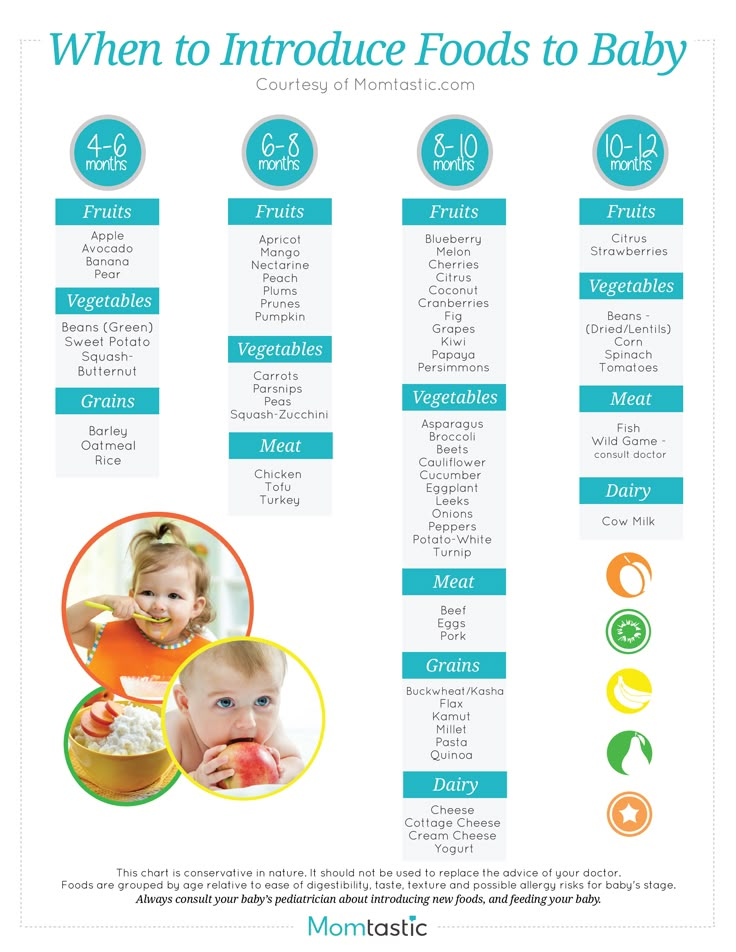 D. He has noticeably grown up, become more active, is interested in objects that fall into his field of vision, carefully examines and reaches for them. The emotional reactions of the child have become much richer: he joyfully smiles at all the people whom he often sees more and more often, makes various sounds.
D. He has noticeably grown up, become more active, is interested in objects that fall into his field of vision, carefully examines and reaches for them. The emotional reactions of the child have become much richer: he joyfully smiles at all the people whom he often sees more and more often, makes various sounds.
Are you still breastfeeding your baby or have you switched to formula or formula feeding? The child is actively growing, and only with breast milk or infant formula, he can no longer always get all the necessary nutrients. And that means it's time to think about complementary foods.
The optimal time to start its introduction is between 4 and 6 months, regardless of whether the baby is receiving breast milk or formula. This is the time when children respond best to new foods. Up to 4 months, the child is not yet ready to perceive and digest any other food. And with the late introduction of complementary foods - after 6 months, children already have significant deficiencies of individual nutrients and, first of all, micronutrients (minerals, vitamins, long-chain polyunsaturated fatty acids, etc.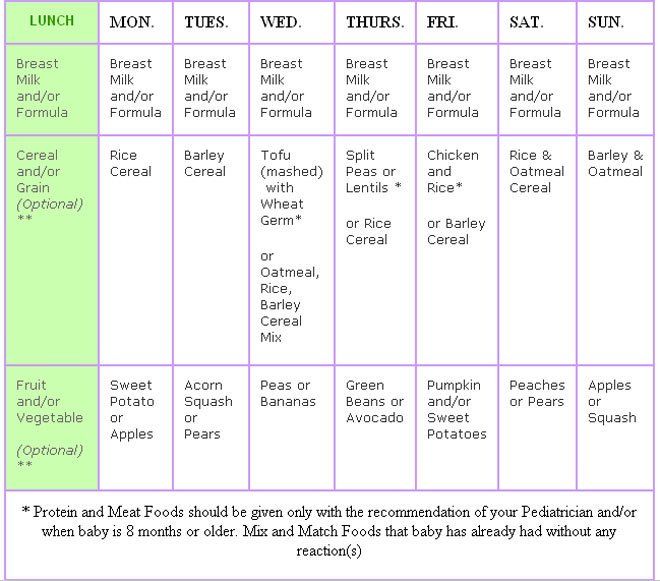 ). In addition, toddlers at this age often refuse new foods, they have delayed development of chewing skills for thick foods, and inadequate eating habits are formed. It is important to know that, no matter how strange it may seem at first glance, with a delayed appointment of complementary foods, allergic reactions more often occur on them.
). In addition, toddlers at this age often refuse new foods, they have delayed development of chewing skills for thick foods, and inadequate eating habits are formed. It is important to know that, no matter how strange it may seem at first glance, with a delayed appointment of complementary foods, allergic reactions more often occur on them.
When is it advisable to introduce complementary foods as early as 4 months, and when can you wait until 5.5 or even 6 months? To resolve this issue, be sure to consult a pediatrician.
As a rule, at an earlier age (4 - 4.5 months), complementary foods are introduced to children at risk of developing iron deficiency anemia, as well as children with insufficient weight gain and with functional digestive disorders.
The optimal time to start introducing complementary foods to a healthy baby is between 5 and 5.5 months of age.
The World Health Organization recommends that breastfed babies should be introduced to complementary foods from 6 months of age.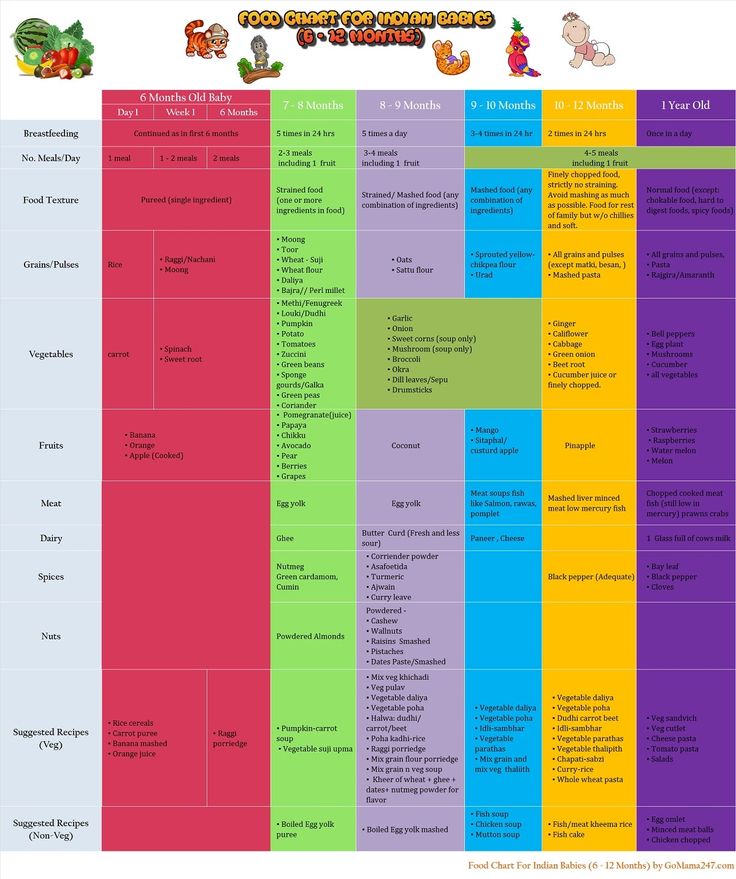 From the point of view of domestic pediatricians, which is based on extensive practical experience and scientific research, this is possible only in cases where the child was born on time, without malnutrition (since in these cases the mineral reserves are very small), he is healthy, grows well and develops. In addition, the mother should also be healthy, eat well and use either specialized enriched foods for pregnant and lactating women, or vitamin and mineral complexes in courses. Such restrictions are associated with the depletion of iron stores even in a completely healthy child by 5-5.5 months of age and a significant increase in the risk of anemia in the absence of complementary foods rich or fortified with iron. There are other deficits as well.
From the point of view of domestic pediatricians, which is based on extensive practical experience and scientific research, this is possible only in cases where the child was born on time, without malnutrition (since in these cases the mineral reserves are very small), he is healthy, grows well and develops. In addition, the mother should also be healthy, eat well and use either specialized enriched foods for pregnant and lactating women, or vitamin and mineral complexes in courses. Such restrictions are associated with the depletion of iron stores even in a completely healthy child by 5-5.5 months of age and a significant increase in the risk of anemia in the absence of complementary foods rich or fortified with iron. There are other deficits as well.
The first complementary food can be vegetable puree or porridge, it is better to give fruit puree to the baby later - after tasty sweet fruits, children usually eat vegetable puree and cereals worse, often refuse them altogether.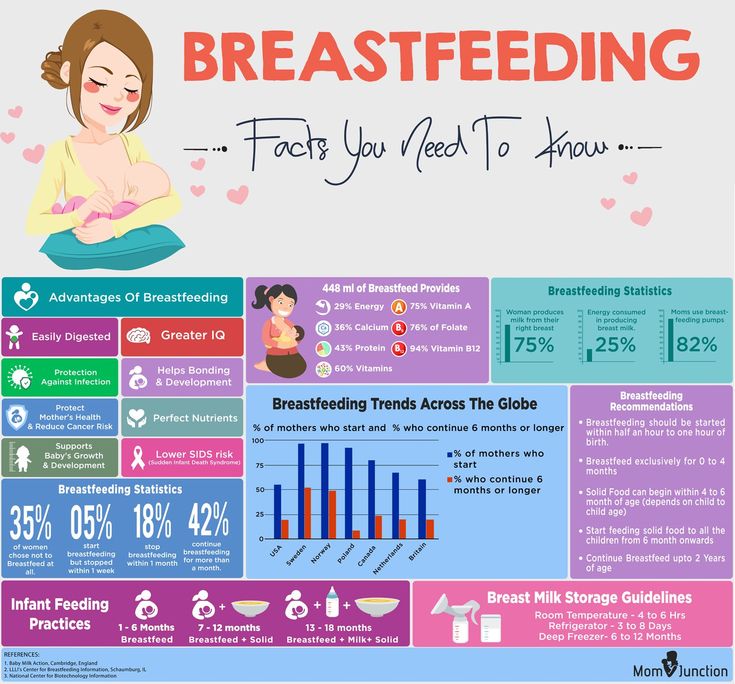
Where is the best place to start? In cases where the child has a tendency to constipation or he puts on weight too quickly, preference should be given to vegetables. With a high probability of developing anemia, unstable stools and small weight gains - from baby cereals enriched with micronutrients. And if you started introducing complementary foods with cereals, then the second product will be vegetables and vice versa.
If the first complementary foods are introduced at 6 months, it must be baby porridge enriched with iron and other minerals and vitamins, the intake of which with breast milk is no longer enough.
Another important complementary food product is mashed meat. It contains iron, which is easily absorbed. And adding meat to vegetables improves the absorption of iron from them. It is advisable to introduce meat puree to a child at the age of 6 months. Only the daily use of children's enriched porridge and meat puree can satisfy the needs of babies in iron, zinc and other micronutrients.
But it is better to introduce juices later, when the child already receives the main complementary foods - vegetables, cereals, meat and fruits. After all, complementary foods are needed so that the baby receives all the substances necessary for growth and development, and there are very few in their juices, including vitamins and minerals.
Juices should not be given between feedings, but after the child has eaten porridge or vegetables with meat puree, as well as for an afternoon snack. The habit of drinking juice between meals leads to frequent snacking in the future, a love of sweets is instilled, children have more tooth decay and an increased risk of obesity.
With the start of the introduction of complementary foods, the child is gradually transferred to a 5-time feeding regimen.
Rules for the introduction of complementary foods:
- Preference should be given to children's products of industrial production, they are made from environmentally friendly raw materials, have a guaranteed composition and degree of grinding
- Complementary foods should be offered to the baby by spoon at the start of feeding, before breastfeeding (formula feeding)
- the volume of the product increases gradually, starting with ½ - 1 spoon, and in 7 - 10 days we bring it to the age norm, subsequent products within the same group (cereals from other cereals or new vegetables)
- can be entered faster, in 5 - 7 days
- start introduction with monocomponent products
- it is undesirable to give a new product in the afternoon, it is important to follow how the child reacts to it
- do not introduce new products in the event of acute illnesses, and before and immediately after prophylactic vaccination (should abstain for several days)
When introducing a new type of complementary food, first try one product, gradually increasing its amount, and then gradually "dilute" this product with a new one. For example, vegetable complementary foods can be started with a teaspoon of zucchini puree. During the week, give the baby only this product, gradually increasing its volume. After a week, add a teaspoon of mashed broccoli or cauliflower to the zucchini puree and continue to increase the total volume every day. Vegetable puree from three types of vegetables will be optimal. The portion should correspond to the age norm. Over time, you can replace the introduced vegetables with others faster.
For example, vegetable complementary foods can be started with a teaspoon of zucchini puree. During the week, give the baby only this product, gradually increasing its volume. After a week, add a teaspoon of mashed broccoli or cauliflower to the zucchini puree and continue to increase the total volume every day. Vegetable puree from three types of vegetables will be optimal. The portion should correspond to the age norm. Over time, you can replace the introduced vegetables with others faster.
After the introduction of one vegetable (bringing its volume to the required amount), you can proceed to the intake of porridge, and diversify the vegetable diet later.
If the child did not like the dish, for example, broccoli, do not give up on your plan and continue to offer this vegetable in a small amount - 1-2 spoons daily, you can not even once, but 2-3 times before meals, and after 7 - 10, and sometimes 15 days, the baby will get used to the new taste. This diversifies the diet, will help to form the right taste habits in the baby.
Spoon-feeding should be done with patience and care. Forced feeding is unacceptable!
In the diet of healthy children, porridge, as a rule, is introduced after vegetables (with the exception of healthy children who are breastfed, when complementary foods are introduced from 6 months). It is better to start with dairy-free gluten-free cereals - buckwheat, corn, rice. At the same time, it is important to use porridge for baby food of industrial production, which contains a complex of vitamins and minerals. In addition, it is already ready for use, you just need to dilute it with breast milk or the mixture that the baby receives.
Children suffering from food allergies are introduced complementary foods at 5-5.5 months. The rules for the introduction of products are the same as for healthy children, in all cases it is introduced slowly and begins with hypoallergenic products. Be sure to take into account individual tolerance. The difference is only in the correction of the diet, taking into account the identified allergens.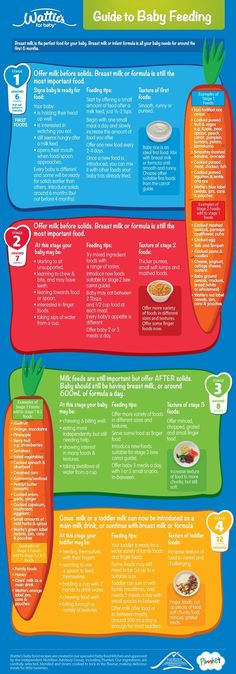 From meat products, preference should first be given to mashed turkey and rabbit.
From meat products, preference should first be given to mashed turkey and rabbit.
Diets for different age periods
Explain how you can make a diet, it is better to use a few examples that will help you navigate in compiling a menu specifically for your child.
From 5 months, the volume of one feeding is on average 200 ml.
Option 1.
If your baby started receiving complementary foods from 4-5 months, then at 6 months his diet should look like this:
| Breast milk or VHI* | 200 ml | |
| II feeding 10 hours | Dairy-free porridge** Supplementation with breast milk or VHI* | 150 g 50 ml |
| III feeding 14 hours | Vegetable puree Meat puree Vegetable oil Supplemental breast milk or VHI* | 150 g 5 - 30 g 1 tsp 30 ml |
| IV feeding 18 hours | Fruit puree Breast milk or VHI* | 60 g 140 ml |
| V feeding 22 hours | Breast milk or VHI* | 200 ml |
* - infant formula
** - diluted with breast milk or VHI
Option 2.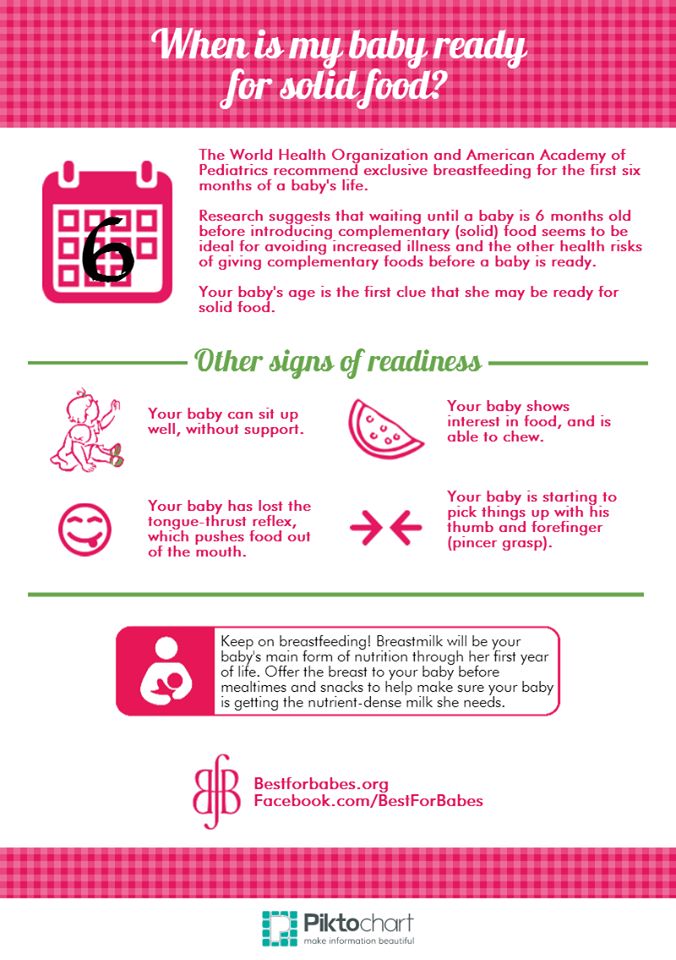
* - infant formula Option 3. : ** - diluted with breast milk Up to 7 months, increase the volume of porridge and vegetable puree to 150 g and introduce fruit puree. I feeding
6 hours Breast milk or VHI* 200 ml II feeding
10 hours Dairy-free porridge**
Fruit puree 150 g
20 g III feeding
14 hours Vegetable puree
Meat puree Vegetable oil
Fruit juice 150 g
5 - 30 g
1 tsp
60 ml IV feeding
18 hours Fruit puree
Breast milk or VHI* 40 g
140 ml V feeding
22 hours Breast milk or VHI* 200 ml
** - diluted with breast milk or VHI 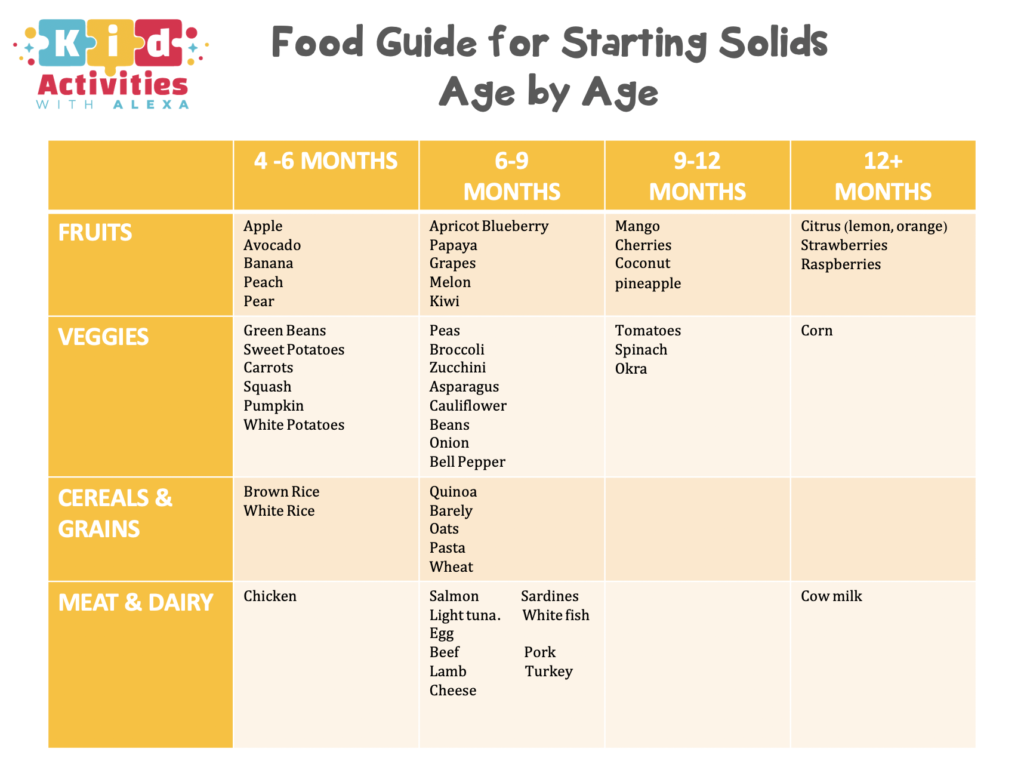
I feeding
6 hours Breast milk II feeding
10 hours Dairy-free porridge**
Breast milk supplement 100 g III feeding
14 hours Vegetable puree
Meat puree Vegetable oil
Breast milk supplement 100 g
5 - 30 g
1 tsp IV feeding
18 hours Breast milk V feeding
22 hours Breast milk 